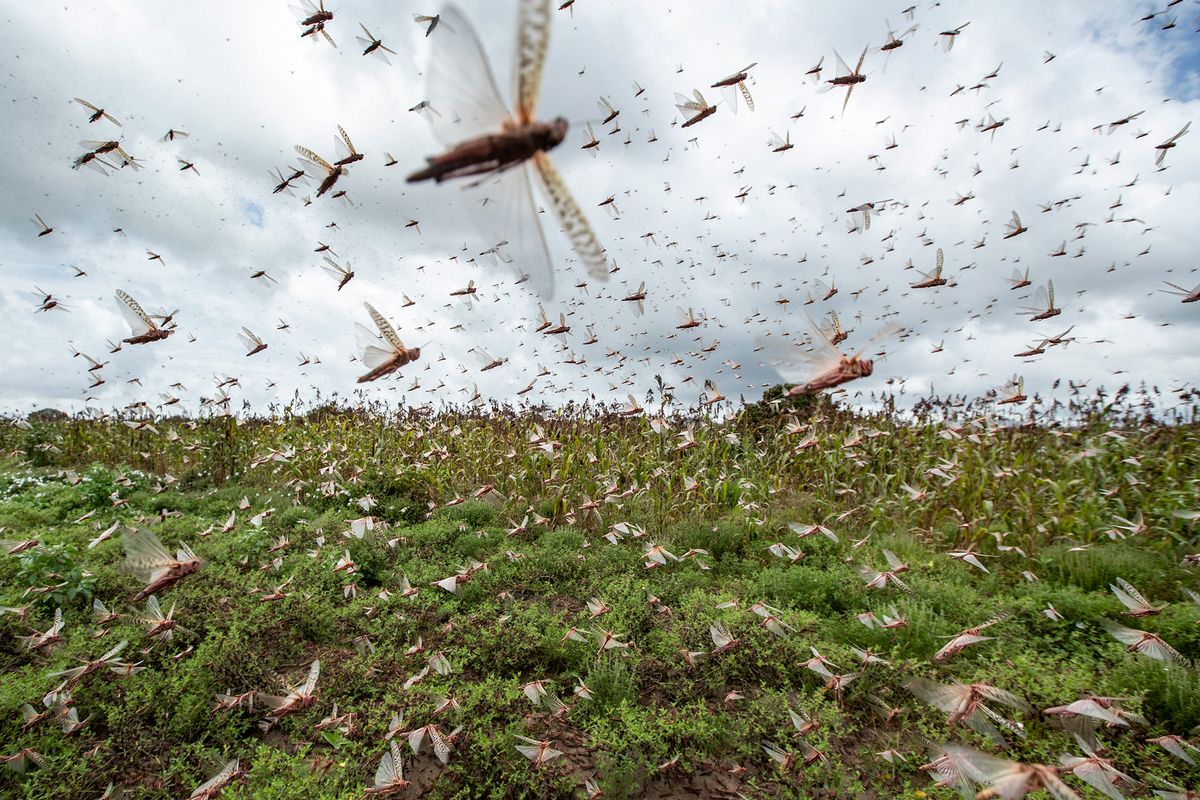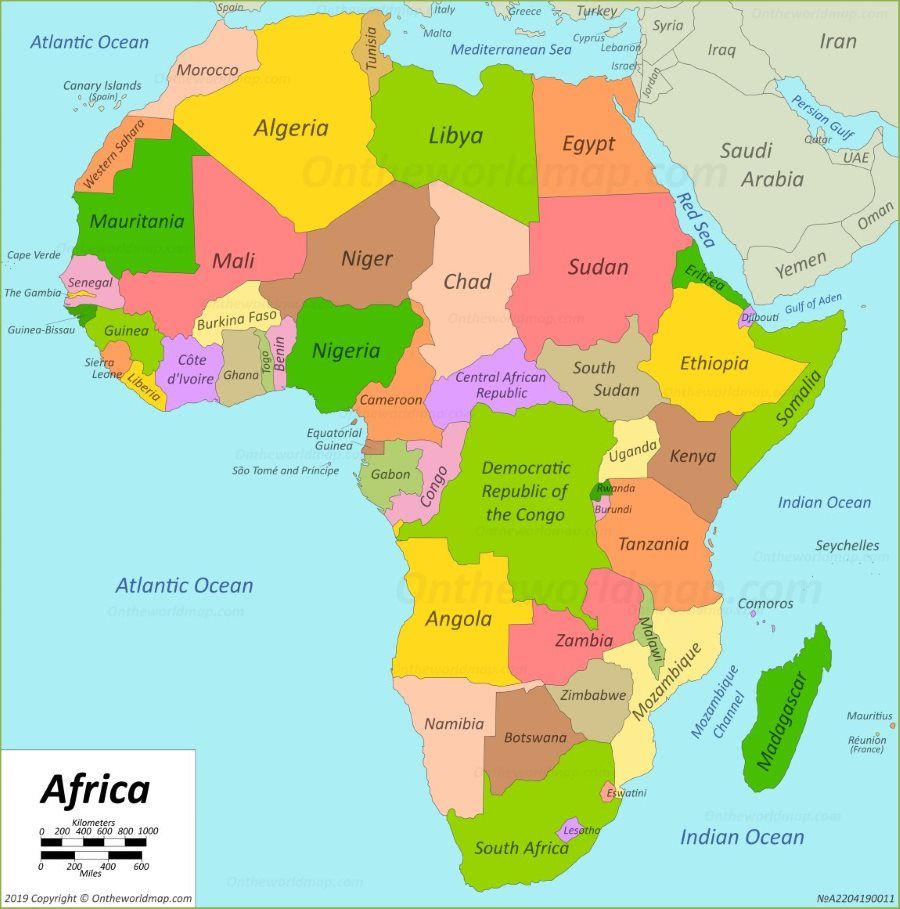Locust swarms continue to spread through East Africa, South Asia

A few minutes every morning is all you need.
Stay up to date on the world's Headlines and Human Stories. It's fun, it's factual, it's fluff-free.
Billions of swarming desert locusts are ravaging crops across East Africa and South Asia, threatening the food supply and livelihoods of millions of people.
In January, the Food and Agriculture Organization (FAO) of the United Nations (UN) appealed to the international community for US$76 million in urgent funding to contain the locusts’ spread and to assist the affected communities. That figure rose to US$138 million, but only US$52 million has been raised so far.
The FAO has warned that locust numbers could grow 500 times by June if the spread is not contained. Desert locusts can travel up to 95 miles (152.88 kilometers) per day and can eat as much food as 35,000 people in a day.
African countries affected
In Africa, the locusts have devastated crops in Ethiopia, Somalia and Kenya, while swarms have also been spotted in Uganda, Tanzania, South Sudan, Djibouti, Eritrea and the Democratic Republic of the Congo. The FAO says the situation in East Africa is “extremely alarming”, as widespread breeding is taking place, particularly in Somalia, Ethiopia and Kenya. The East African region is one of the poorest in the world and already suffers from food insecurity.

In January, Somalia declared a national emergency over the locust surge. The country’s Ministry of Agriculture said that the desert locust surge “poses a major threat to Somalia’s fragile food security situation. Food sources for people and their livestock are at risk. The desert swarms are uncommonly large and consume huge amounts of crops and forage.”
East African countries have been finding it difficult to cope with the locust invasion due to a lack of funds. Aerial and ground spraying of pesticides has been determined to be the most effective way of combatting the locusts, as well as monitoring the swarms’ movements.
According to Robert Cheke, a zoologist at the Natural Resources Institute (NRI) in London which is advising Uganda on locust control, some of the affected countries are behind in payments to the Desert Locust Control Organization for Eastern Africa (DLCO-EA), which provides a locust early-warning system and helps to control outbreaks.
Djibouti, Somalia and Sudan collectively owe the DLCO-EA more than US$8 million. Uganda partially cleared its arrears last month, but still owes US$2 million. Cheke said the DLCO-EA “can’t do anything if they haven’t been given their contributions.”
Speaking to the BBC, the head of the DLCO-EA, Stephen Njoka, said that aircraft used for monitoring and spraying are in short supply, with Ethiopia currently using five for spraying and Kenya six craft for spraying and four for surveying.
Spread in Asia
In Asia, desert locust swarms have been spreading through Yemen, Bahrain, Kuwait, Qatar, Iran, Saudi Arabia, India and Pakistan.

In February, Pakistan’s government declared a national emergency after locust swarms ravaged cotton, wheat, maize and other crops in the country. “We are facing the worst locust infestation in more than two decades and have decided to declare [a] national emergency to deal with the threat,” said Information Minister Firdous Ashiq Awan.
Prime Minister Imran Khan pledged to tackle the issue, saying: “The federal government will take all possible steps and provide required facilities to protect crops from any possible danger with special focus on the danger of locust.”
China, which shares a border with Pakistan, has heightened prevention and control measures for the possible arrival of locusts, although the risk of this occurring is believed to be low. “Although experts believe that the risk of swarms entering the country and causing disaster is relatively low, [China] will be hampered in tracking the locusts by a lack of monitoring techniques and little knowledge of migration patterns [if they do] invade,” the National Forestry and Grassland Administration said on its website.
China has been particularly concerned by the potential locust invasion as the country battles with the spread of COVID-19 and the toll it has taken on the country’s economy. China is also worried about their crops after the spread of fall armyworms that ate their way through crops over millions of hectares of farmland in 2019. Beijing has recently sent a team of experts into Pakistan to survey and assist in controlling the locust problem. China will also be providing Pakistan with drones and pesticides.
What caused the outbreak?
Desert locusts need moist soil to lay their eggs and therefore breed after periods of rainfall. When there’s heavy rainfall, their numbers can increase rapidly – resulting in swarms.
The current outbreak appeared as a result of cyclones in 2018 and heavy rainfall at the end of 2019 that occurred near the Arabian Peninsula, providing locusts with the ideal breeding ground. “That was just a huge sandy area that got wet by these extraordinary rains. And this is exactly what desert locusts need in order to lay their eggs and to breed,” says Keith Cressman, the FAO’s senior locust forecasting officer.
[article_ad]
Have a tip or story? Get in touch with our reporters here!




Comments ()